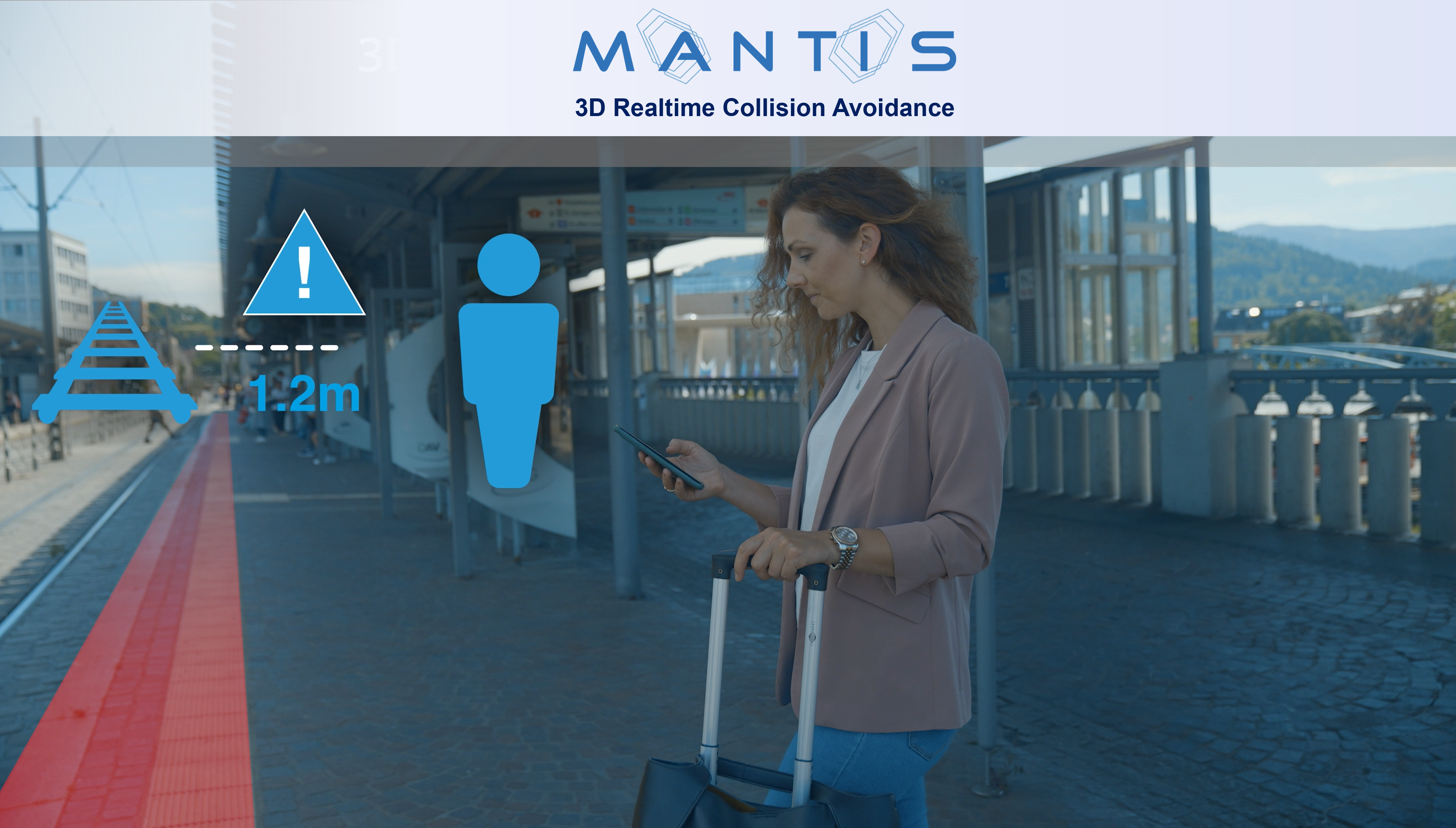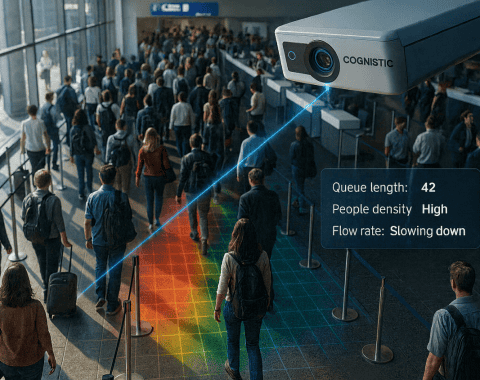
While the buzz around large language models in Artificial Intelligence (AI) is capturing everyone’s attention, the true excitement lies in the realm of industrial applications with remarkable advancements taking place driven by the rapidly expanding potential and opportunities offered by AI. Within this context, Cognistic stands out as a pioneering force, leveraging AI to revolutionize the transportation industry through collaboration with SICK cameras and sensors. The results are combined cutting-edge AI-powered solutions that don’t only tackle today’s intricate challenges but also pave the way for unprecedented growth and innovation.
Surpassing Simple Counting of Passengers
The spectrum of riders of public transportation encompass a diverse array of individuals. Among them are daily commuters with their backpacks, trolleys, and laptop cases. There are also children accompanied by their toys and strollers, as well as seniors relying on canes and walking frames. Even cyclists seeking a quick route to embark on their bike tours join the mix. Each of these individuals imposes unique and specific requirements upon the transit system—be it the space they occupy or the timing of their embarkation and disembarkation. CONDOR adeptly registers and accommodates this multifaceted complexity.


CONDOR stands as an AI-driven software, specializing in crowd detection, classification, and counting. Developed by Cognistic, this advanced tool utilizes a live video feed from the Visionary-T Mini 3D snapshot camera. Its primary function involves providing real-time passenger counts within buses or trains, along with a comprehensive inventory of the items they bring on board. Operating on a locally installed edge computing device ensures continuous and seemless operation without cloud dependencies or interruption. Notably, the system exhibits remarkable precision, rendering frequent recalibrations unnecessary. Moreover, it adheres strictly to privacy regulations as defined by EU law, ensuring the secure transmission of count data to the cloud for subsequent detailed analysis.
Within daily operations, the implementation of automatic passenger and baggage counting introduces an additional safety dimension. Furthermore, the classification of passengers based on various attributes, such as those using wheelchairs, strollers, or bicycles, along with their baggage and personal belongings, serves as a crucial foundation for enhancing route planning, optimizing capacity utilization, and refining maintenance scheduling. By gaining comprehensive insights into these aspects, transit agencies can discern specific requirements and formulate an all-encompassing and inclusive approach to address their demand planning effectively.
Safeguarding Passengers at the Train Station
Sprinting across stations to catch a tram poses significant physical dangers due to the fast-paced nature of everyday life, particularly when passengers and the massive transportation machines intersect. Currently, there are only a few monitoring solutions implemented in these settings, but they often suffer from errors with environmental factors such as rain, fog, dust, and reflective surfaces also hindering performance. Additionally, the challenge is compounded by the diverse range of human shapes, heights, and postures, as well as the presence of individuals using wheelchairs, children in strollers, and pets on leashes, making accurate detection of people and their movements in crowded LRT stations a challenging task Nonetheless, accuracy is of utmost importance, especially in locations where there is no platform edge, and the tracks are level with the sidewalk.

In such scenarios, the consequences of false alarms and mistakes can be extremely serious. To address these challenges, Cognistic developed MANTIS, an AI-powered solution tailored to tackle these issues. MANTIS utilizes advanced technology to process real-time information obtained from either the Visionary-S, a cutting-edge 3D vision sensor, or the 2D LiDAR sensors (LMS511, LMS111, LD-MRS), all within a high-performance local AI computing infrastructure. Once passengers are detected within high-risk zones, safety protocols are swiftly activated, including the option to send notifications through phone-enabled applications or platform speakers.
An age-old dilemma persists: How can one effectively travel from point A to point B? With a growing array of passenger options such as buses, trains, bikes, and rented scooters, the task of finding the optimal combination becomes increasingly intricate. The complexity is mirrored in the challenges faced by operations managers and supervisors, who must strive for efficient scheduling and dispatching, cost reduction, environmental impact mitigation, and swift adaptability to real-time changes. Without a data-driven approach, this undertaking becomes expensive, error-prone, and heavily reliant on guesswork.
Optimizing Route Planning and Scheduling with AI
Getting ready for a trip always comes with the daunting question of how one can effectively travel from point A to point B in the fastest way and in the most convenient manner? With a growing array of passenger options such as buses, trains, bikes, and rented scooters, the task of finding the optimal combination becomes increasingly intricate. The complexity is mirrored in the challenges faced by operations managers and supervisors, who must strive for efficient scheduling and dispatching, cost reduction, environmental impact mitigation, and swift adaptability to real-time changes. Without a data-driven approach, this undertaking becomes expensive, error-prone, and heavily reliant on guesswork.

ZIGGY, an AI-powered scheduling and route optimization system, revolutionizes the way transit operations managers create ideal bus and train schedules. By eliminating randomness from resource allocation, scheduling, and routing, ZIGGY removes the need for manual planning. Leveraging data from CONDOR on ridership demand, along with real-time traffic information, ZIGGY adopts a multifaceted approach. This unique feature enhances its value for transit agencies and passengers alike, enabling them to optimize fleet sizes, routes, and other critical factors for both strategic and operational planning purposes.
A Partnership with Boundless Future Possibilities
The Cognistic and SICK partnership represenets a harmonious blend of excellence and swiftness, continuously generating innovative applications. This synergy has been evident from the outset, and over time, the opportunities for combining the two complementary expertise have flourished. Cognistic’s dedication and rapid solution development for the mass transit market make it an ideal partner for SICK in crafting future applications.
The high performance of Cognistic’s AI solutions fits very well with what SICK stands for: Rugged and reliable sensors and solutions which show good results even under very difficult conditions
Christoph Seewald, Head of Global Industry Management for Mobility & Outdoor Automation at SICK.
The high quality of SICK sensors, demonstrated by the high accuracy and precision of 3D perception data, complements the accuracy of our AI model, and high speed enables real-time operationalization of Cognistic solutions
Amjad Zaim, Founder and CEO of Cognistic
With ongoing projects like pedestrian and obstacle detection in industrial applications, this partnership holds immense potential for the future.



